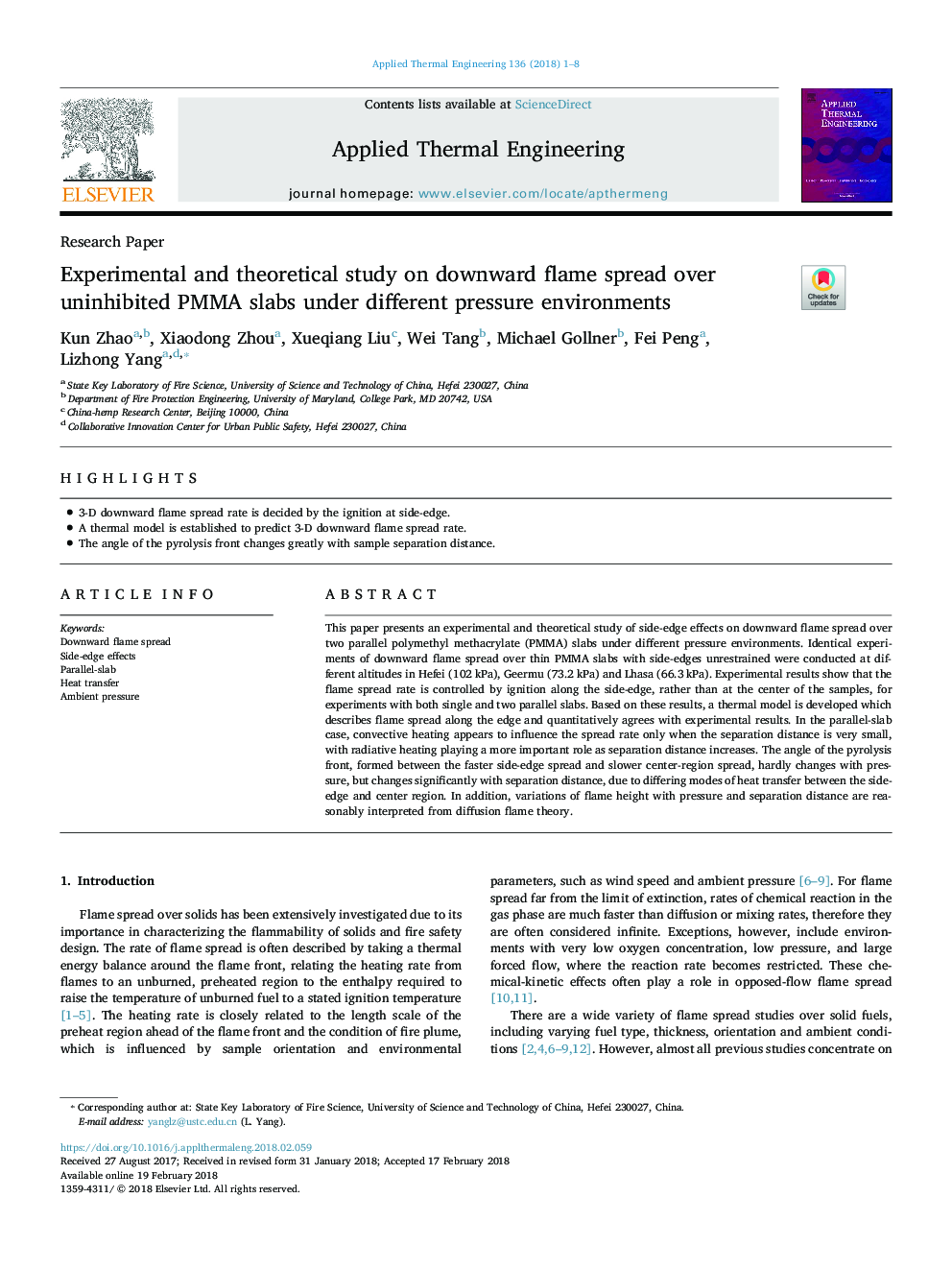| Article ID | Journal | Published Year | Pages | File Type |
|---|---|---|---|---|
| 7045526 | Applied Thermal Engineering | 2018 | 8 Pages |
Abstract
This paper presents an experimental and theoretical study of side-edge effects on downward flame spread over two parallel polymethyl methacrylate (PMMA) slabs under different pressure environments. Identical experiments of downward flame spread over thin PMMA slabs with side-edges unrestrained were conducted at different altitudes in Hefei (102â¯kPa), Geermu (73.2â¯kPa) and Lhasa (66.3â¯kPa). Experimental results show that the flame spread rate is controlled by ignition along the side-edge, rather than at the center of the samples, for experiments with both single and two parallel slabs. Based on these results, a thermal model is developed which describes flame spread along the edge and quantitatively agrees with experimental results. In the parallel-slab case, convective heating appears to influence the spread rate only when the separation distance is very small, with radiative heating playing a more important role as separation distance increases. The angle of the pyrolysis front, formed between the faster side-edge spread and slower center-region spread, hardly changes with pressure, but changes significantly with separation distance, due to differing modes of heat transfer between the side-edge and center region. In addition, variations of flame height with pressure and separation distance are reasonably interpreted from diffusion flame theory.
Related Topics
Physical Sciences and Engineering
Chemical Engineering
Fluid Flow and Transfer Processes
Authors
Kun Zhao, Xiaodong Zhou, Xueqiang Liu, Wei Tang, Michael Gollner, Fei Peng, Lizhong Yang,
